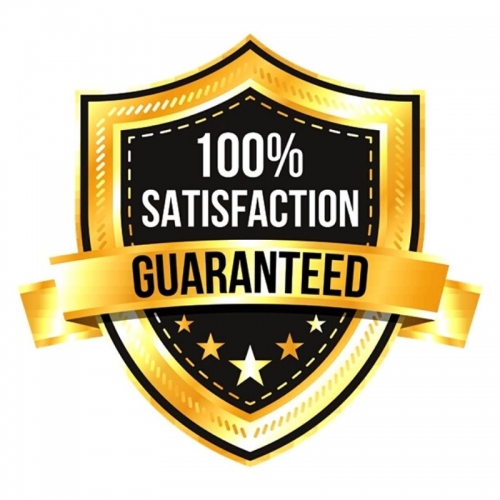Intellectual Capital – Dubai
If intellectual capital is sufficiently developed and well nurtured and developed, its strength is more vital than external threats. This is precisely what the partners want to feel and experience, and investors are willing to the investor, in the case of acquisitions, pay more than the value determined by one of the classic methods of a company valuation.
Intellectual capital has become an essential substance of excellent entrepreneurial organizations. Why measure, nurture and develop it?
Because the future never happens — someone creates it because complex problems need to be dealt with while it is still accessible, because big ones need to be dealt with while they are still small.

Changing lifestyles, demographic change, stratification and increasing poverty, climate change and environmental-energy challenges, digitalization of life and new technologies, geopolitics, a pandemic that accelerated further deglobalization (continuing the multi-year economic crisis that began in late 2007 and Trump’s presidential term), these are all circumstances with the characteristics of chaos as the current order, which require the economy, economic units and business entities operating in them to move away from the principle of business as usual. Under the influence of ‘poor visibility and unpredictability, new business concepts with characteristics of longevity, sustainability, stability, and security are being sought.
The expected turnaround, inappropriate for previous experiences, implies the realization of sustainability, defined as “a way of using resources that meets the needs of people and organizations today without compromising the ability of future generations to meet their needs.” Businesses that thrive in an age of chaos are neither beautiful nor overly tidy, not burdened by the immutability of plans and strategies brought by people at the top of the hierarchy, but are flexible, innovative, and adaptable. They operate respecting the general principles of freedom, community, equality, and solidarity. They insist that the potentials and needs of all stakeholders should be constantly monitored and used, and satisfied economically. In doing so, the ability to act in conditions of poor visibility, uncertainty, and unusual events should be demonstrated.
They can resist resistance to change, and their power of response and quasi-reason why not change and maintain the status quo: ‘We will wait a little longer.’; ‘Ma, it will be better, it will go back to the old (only it is not), there is no need to change.’; ‘We are different and specific.’; ‘We’ve tried it before, so it didn’t work.’
Nurturing a harmonious partnership
It should be accepted that in the post-industrial age when everything is produced and offered much more than what is demanded and can be sold economically, the key to success is detailed knowledge and understanding of human emotional needs and desires. The market outlook does not depend so much on reducing production costs and increasing profits as on developing new revenue streams based on new ideas. Above all, it is essential to build stronger ties with its (good, very good, and excellent) people, and hence the quality of the relationship between producers and service providers with consumers and other stakeholders. The partnership relationship (positive reaction, emotion) is a significantly higher level of excellence in business than the classic law of supply and demand (product, price, quality).
Nurturing a harmonious partnership encourages businesses to move from ‘making money to ‘economically sensible sharing of the loaf of bread to all components of their ecosystems.’ Revenue confirms the current market position, profit is the organization’s ability to optimize processes and resources, and money is the oxygen needed for current operations and investments. These financial categories are essential indicators and interim measures of success but are less interpreted as excellence and sustainability in the long run. In general, the classic financial performance indicators of an individual business entity have become information of limited value to assess how much it is worth, what level of excellence it is, and its prospects for success or failure in the future.
Under the influence of fear and greed, misconceived material motivation of people and self-care (cutting costs instead of thinking about how to create preconditions for new income and earnings) focusing on short-term financial benefits directs entrepreneurial organizations in the wrong direction, which is a great danger and leaves room for errors. In the previously described ‘modern times,’ intellectual capital is the most potent organizational weapon in the battle for success and survival.
One of the most frequently cited interpretations of intellectual capital is the Swedish author Leif Edvinsson’s Skandia Intellectual Capital Value Scheme, published in 1997. innovation capital and process capital.
Human capital
Authors of the bestselling book ‘Funky Business’ Nordström and Ridderstråle have argued that the human brain is the most powerful weapon on Earth. Properly used, when allowed to work at lower speeds, it creates, not just reacts, as it usually does at higher speeds under pressure. At lower speeds, it can achieve concentration and creative thinking. Milan Kundera calls it the ‘wisdom of slowness.’ Quick thinking is rational, analytical, linear, and logical. It finds clear solutions to clearly defined problems. Slow thinking, without pressure, is intuitive and creative and brings exceptional values, a view of the whole, and systematic solutions.
Charles Darwin said of himself that he ‘thought slowly,’ and Albert Einstein in his office used to stare endlessly at nothing and think (and we know what that brought us). The latter described the need for a measured combination of speed and intellect as follows: ‘Computers are incredibly fast, accurate and stupid. People are prolonged, inaccurate, and intelligent. Together they are inconceivably powerful. ‘
In terms of human capital, you will know that an organization has a chance of longevity when you see that its people who two or three years ago were insecure and had a narrow view of the world and their capabilities now responsibly consider complex ideas and evaluate different points of view. As they develop as individuals and team members within the human resources management system, the faith in the organization and the need for cooperation grow and develop among stakeholders.
Analyzes of regulations, policies, procedures, documents, and records governing the field of human resources management will provide much important information on the adequacy of organizational structure, job and job systematization, performance management models, turnover, quality of management and leadership, satisfaction, and motivation, competencies; about everything that is a prerequisite for complete and quality engagement 3H (hand — heart — head, i.e., hands — heart — brain), which will depend on quality and development, positively or negatively affect the capital of clients and the capital of innovation and processes.
It is an excellent responsibility of managers and the quality and development of human capital for smaller businesses and founders. The key is a responsibility and the competence they possess and need. Depending on how much they can be true leaders, those who have managed to overcome the appeal of the traditional leadership style and move away from the role of ‘hero’ consisting of giving clear guidance and frequent manipulation, focusing on short-term events instead of systemic solutions and collective learning; how much they can learn, understand and take responsibility for building the organization by inspiring, breathing the life of the learning organization, managing the creative tension that gives the organization creative energy and a sense that reality can and must be influenced together.
Capital of clients or partners
Developing relationships with market partners can be translated as building trust in entrepreneurship. Trust is a decisive factor that affects how a company is perceived and evaluated. Intensive and honest communication, dialogue, in both directions, will enable the level of trust to grow, vital information to be exchanged, understood, and accepted, and thus will allow the organization to effectively and efficiently ‘produce’ added value and the best complete solutions for existing and potential market partners. Nowadays, in the conditions of developed communication and available technology, the essential quality of products and services offered on the market is relatively balanced. If the differences in what we buy are minor, the key remains from whom we believe it, from what organization we want to buy or cooperate within some other form, if we wish to identify with them in any way.
To meet the requirements of selected market partners and thus achieve economic benefits, entrepreneurial organizations will increasingly actively involve partners in joint planning. The winning strategy of excellent organizations confirms that the organization is not Katica for everyone (to know what should not and cannot be done).
It depends on two abilities: the ability to segment the market (targeting the most commercially potent and financially secure partners, not to serve too many different types of customers) and the ability to differentiate (create something different, better, and more attractive, and economically justified).
Reading material data from accounting records (balances of accounts) on business with customers and suppliers and linking them with data available to those responsible for market relations (sales, procurement, collection, marketing, economic analytics…) and data from public registers, media, and social contacts will allow assessing the value of clients’ capital. How intensive is the cooperation (turnover trends about the commercial potential of the partner), how wide is it (portfolio of products and services based on which the turnover is realized), how does it affect liquidity and profitability (payment deadlines, price difference,), and how many risks it carries out (creditworthiness, payment security instruments, currency risks, turnover shares, substitutability…), how many large, excellent and potent partners there are, and how many others; what are their business profiles and who are the potential partners who have the characteristics of our existing ‘best partners.’ From all the above, when it is arranged into a whole called ‘segmentation,’ it will be possible to assess clients’ capital and know-how to manage it.
Considering the possibilities of the organization’s human capital, understanding the potentials and needs of partners (client capital) comes to facts and recommendations that affect action in the field of organizational capital development (innovation and process capital) and its management.
Capital innovation and process
The ability to segment will remain untapped or only partially used if the ability to differentiate is not confirmed (to create something different and better and then more attractive). These two capabilities, which are also interpreters of innovation and process capital, are realized through systematic and continuous application of analytical procedures, including analysis of maturity and attractiveness of activities (Porter’s 5F, ADL …), analysis of competitive factors, value curve analysis. ), analysis of portfolio life, resources, organizational units (BCG matrix, McKinsey capability analysis, GE …), risk analysis (Argentine analysis of the risk of multiple errors, Peterson 15 …), assessment of the level of excellence (VRIO analysis resources, competencies, and capabilities, EFQM excellence assessment model …) and SWOT, analysis of the relationship between the capabilities (own strengths and weaknesses) of the organization and environmental circumstances (opportunities and threats) which combines the findings and recommendations of the above analyzes.
By applying the concept of ‘sell, sell and only sell,’ a considerable effort is invested in winning over the competition to convince market partners that precisely what we offer them is ‘the best, that it is better than others and ideal for them. Economically reasonable to sell and buy = win is becoming increasingly difficult to achieve because, in many industries, supply has significantly exceeded demand. To create new opportunities for growth and earnings away from the competition, an increasing degree of innovation is required in most industries (in what is offered to the market and in the organization of internal processes).
It should be borne in mind that only a century ago a significant number of today’s primary industries (automotive and aerospace, healthcare, consulting) were not heard of or were in their infancy. Mobile phones, mutual funds, video devices, and laptops did not exist thirty years ago. If history predicts the future, imagine how many unknown industries will emerge and develop in the next thirty years and how many current stars will disappear.
Scenarios of alternative trends
For something new, such as a good idea, to be called an innovation, concrete material evidence is needed in the market (revenue, number of partners, quality of relationships) and in financial results (profitability, activity, liquidity, return on investment). Innovation is not a matter of chance, creativity, happiness, or inspiration. For the organization’s ability to innovate and create economically, it is necessary to develop alternative trends in the future. Thus, instead of preparing information based on which decisions are made, planning turns into mental preparation and helps to think about coping with the new order and environment.
There are no excellent prospects for innovation and excellence. The degree of openness and honesty (freedom of opinion) in the organization is essential for creation; in traditional organizations, ‘who’ is more important than ‘what’ and people do what is asked of them, not what is needed. Where a shared vision dominates, where personal interest does not come first, where participatory and reflective openness is integrated, the chances of success based on innovation and excellence are much higher.
If intellectual capital is sufficiently developed and well nurtured and developed, its strength is more vital than external threats, and it is ready and able to realize economically reasonable everything that well-chosen opportunities in the environment offer. This capital is a critical organizational value due to which the organization is much more resistant to various forms of crises, most often consciously staged in favor of some stakeholders and to the detriment of others. This is precisely what the partners want to feel and experience, and investors are willing to the investor, in the case of acquisitions, pay more than the value determined by one of the classic methods of a company valuation.


